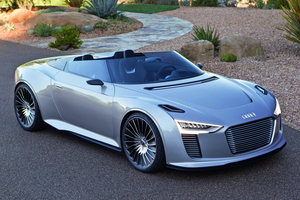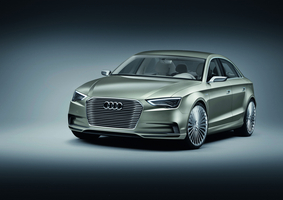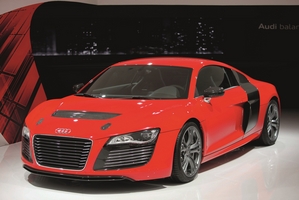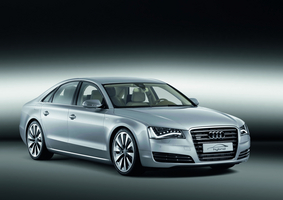|
Send this page to a friend! Fill in the form bellow | ||
news
Audi Aiming for Carbon Neutrality by 2020
Audi is discussing its strategy of becoming a carbon neutral company while working on new hybrid and electric powertrains. Audi wants to be the leading world producer of electric vehicles by 2020 and have a total annual sales of more than 100,000 for hybrid and electric models by that time.
Audi will begin using the terms E-tron, Ultra and Connect when marketing its cars. E-tron is the name of Audi's hybrid powertrains; Ultra shows lightweight construction; and Connect shows that the car is networked. Audi claims that E-tron will be as important to its models as Quattro in a few years.
There will be more hybrids in Audi's future. It plans to have an A3 with a plug-in hybrid with range-extender in volume production by 2014 that will carry the E-tron name. It will use a 211hp, 1.4 TFSI engine and a 20kW electric motor with an electric range of 50km. A4 and Q7 E-tron models will follow shortly after. In the near term, the A6 hybrid and A8 Hybrid will be released.
Audi is also considering building more performance-oriented hybrids. The A5 E-tron would use electric motors mounted on the front and rear axle in addition to an internal combustion engine. The E-tron Spyder will use a mid-mounted diesel engine driving the rear wheels with an electric motor powering each front wheel. Finally, Audi is experimenting with the A1 E-tron that has a powerful electric motor powering the front wheels and a 250cc rotary engine in the rear as a range extender.
It is experimenting with the Q5 HFC that uses a 98kW hydrogen fuel cell to charge a lithium-ion battery. The two front-mounted electric motors then drive the car. Audi says that it makes 121hp and 310lb-ft of torque. Audi is not predicting fuel cell vehicles on sale anytime soon because of the lack of hydrogen infrastructure.
In the near term, Audi has been working on making its internal combustion engines cleaner. More than 100 of Audi's models produce less than 140g/km of CO2. The company has been introducing cylinder-on-demand technology to some of its models to cut emissions even more. The new 4.0 TFSI can deactivate four of its eight cylinders, and the new 1.4 TFSI can deactivate two of its four cylinders.
Like BMW, Audi is working on creating carbon fiber-reinforced plastic bodies for its cars. It will integrate the material with the aluminum that is already extensively used on its cars.
Audi knows that it has to create cleaner models for the future. It is already experimenting building its own wind turbines and hydrogen electrolysis. If it expands on these technologies, in the future Audi could be providing its own fuel for its cars.
Encyclopedia |
Contribute
more about Audi



latest news











